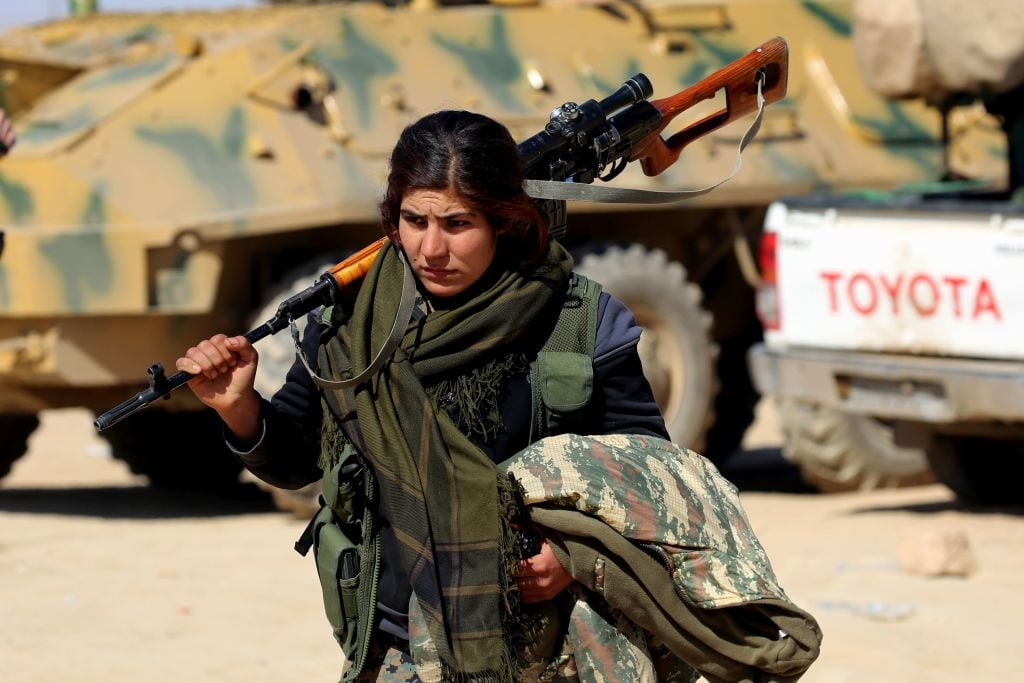The Trump administration's controversial decision this week to arm a Kurdish militia group in northern Syria set off a wave of propaganda suggesting it had taken possession of U.S. battle tanks and up-armored transports as part of the deal.
Um, no.
The People’s Protection Unit, better known as the YPG, is focused on liberating Raqqa, which has served as the Islamic State's capital city. YPG fighters are bracing for a difficult campaign, one they will carry out with the assistance of U.S. military advisers and aid — but not M1 Abrams and MRAPs, experts say.
Imagery of such vehicles is being recycled on social media by Kurdish activists hoping to boost morale among its units and antagonize both ISIS and Turkey, which considers the YPG a terrorist organization and resents Washington's support for it. That dynamic has been at the center of diplomatic tensions between the NATO allies.
U.S. Central Command has offered few details about the YPG's package, citing a desire to not advertise the capabilities of its allies. Officials have said only that, beyond small arms and heavy machine guns, the gear will include "armored vehicles and weapons capable of destroying vehicle borne improvised explosive devices."
A Pentagon spokesman, Navy Capt. Jeff Davis, indicated that much of the equipment slated for disbursement to the YPG is the same gear already provided to another ally in the region, the Syrian Arab Coalition.
The SAC uses Guardian Armored Personnel Carriers built by International Armored Group. They are "up-armored Ford vehicles," another military spokesman, Air Force Col. John Dorrian, explained several weeks ago.
The Guardian appears to be the only armored vehicle supplied to Syrian groups by the U.S., said Pieter Wezeman, who studies Middle Eastern arms trafficking for the Stockholm International Peace Research Institute.
U.S. officials have declined to say whether anti-tank rockets or TOW missile systems, which are capable of destroying up-armored vehicle improvised explosive devices, would be supplied to the YPG. However, the Syrian battlefield is already littered with such equipment.
"I have seen is a variety of AT [anti-tank] weapons being used in Syria," Wezeman explained. "These include TOWs. … Saudi Arabia has been mentioned as the main source. Chinese Red Arrow [anti-tank guided missiles] and, of course, a variety of Russian models have been spotted" there too.
Shawn Snow is the senior reporter for Marine Corps Times and a Marine Corps veteran.



